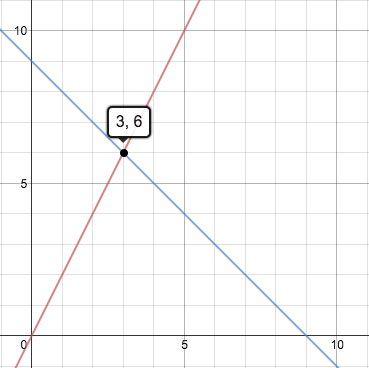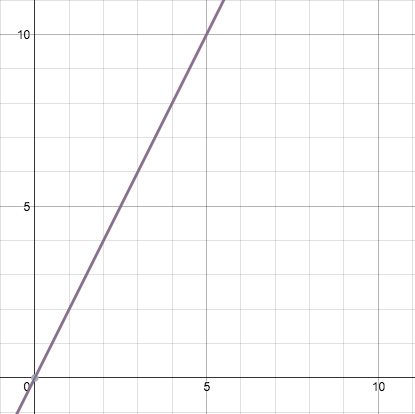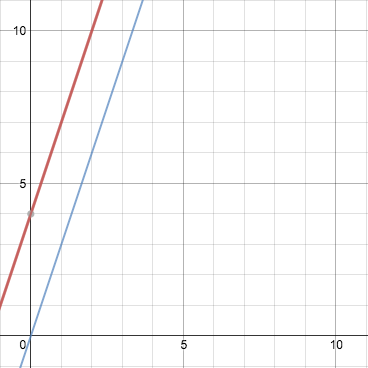How many solutions can a system of linear equations have?
1 Answer
With linear systems of equations, there are three possible outcomes in terms of number of solutions:
- One solution.
- Infinitely many solutions.
- No Solutions at all.
If there is one solution, it means that there is a single intersection between the two lines that your equations give. For example, considering the following equations:
If we graphed them both, this is what we'd end up with:

Blue line:
Red line:
As you can see, both lines intersect at the coordinate
If there are infinitely many solutions, it means that both your equations are referring to the same line . For example, if we took our graph from last time but made both lines

As you see, the two lines are indiscernible from one another. Hence we can say that they share ever single solution that is valid for them, or rather have infinitely many solutions that work for the both of them.
Lastly, if there are no solutions to a system, it means that the two lines represented by the equation are parallel.
For example, consider the following equations:

As you can see, the two lines are parallel, and will never meet. Therefore, they have no points in common, and therefore no common solutions . An easy way to check for parallel lines is to check if your two equations have the same slope, but different y intercepts.
Hope that helped :)

